It (and everything) is more than just organic search…
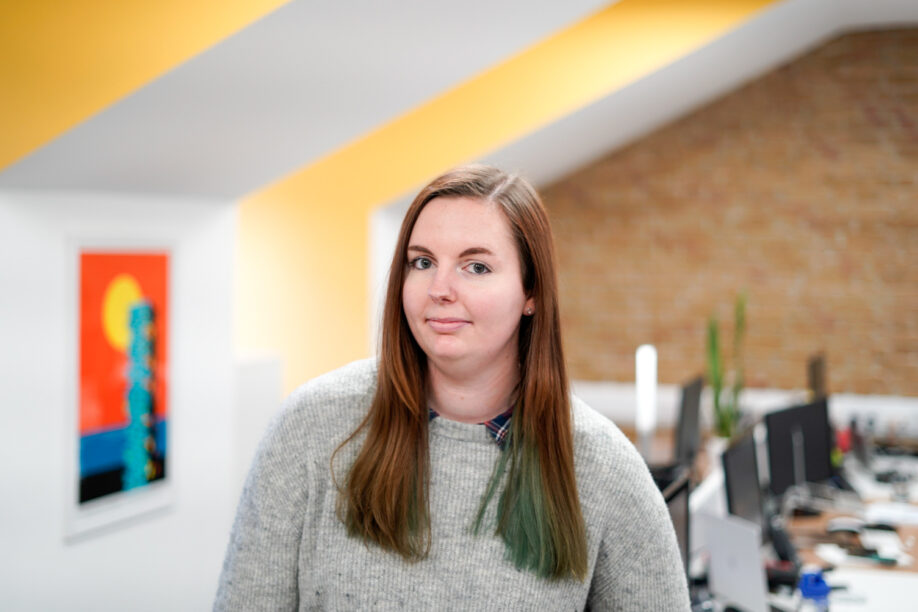
Jess Bott, Digital Content & SEO Manager talks all things organic search, and how it must work with, and support, all other marketing channels.
You’ll be forgiven for thinking that BrightonSEO, the UK’s largest gathering of search marketers, is just about SEO. While most things do link back to search, it covers so much more; from Content to TikTok and Brand to AI, there really is something for everyone. This served as a stark reminder that even the most successful search strategy cannot stand alone. It must work with all marketing channels and forms. This isn’t solely for marketing success, it’s what’s best for your audience.
In a world where the average customer journey can range from anywhere between 20 and 500 touchpoints (Think with Google) having interconnected channels is a necessity. But how can search augment and learn from other channels? Here are just a few of my takeaways from the conference.
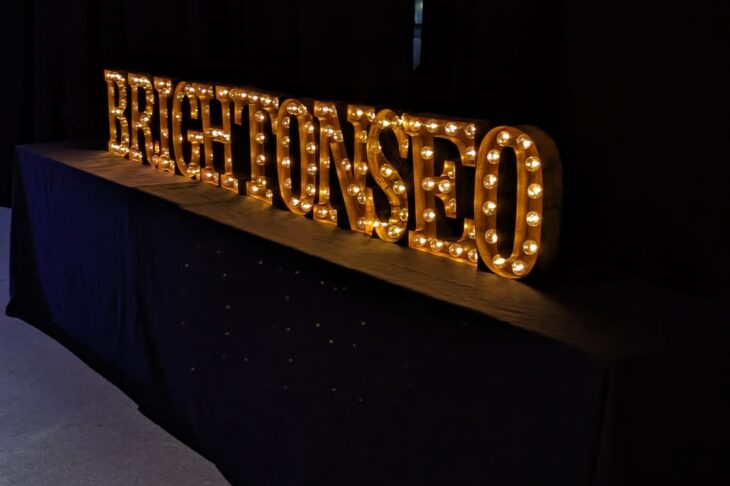
Content Marketing and Search: Arguably Inseparable
When looking at how organic search intertwines with other marketing channels or disciplines, it’s only natural to start with content. After all, the Helpful Content update dominates many conversations that search marketers have. But it’s not just that update that makes content marketing and search interconnected.
When we’re looking at websites from an SEO perspective, we look at four core aspects:
- Technical SEO
- On-page SEO
- E-E-A-T content
- Outreach
All of these can be linked back to content in some shape or form, even some aspects of technical SEO.
To put it simply, optimising your site from an on-page perspective involves making sure you’re providing the correct signals to both users and search engines. As part of this, you’ll be looking at details like your header tags and meta descriptions to name a few, which are content.
And, for E-E-A-T content, it’s in the name. This is the type of content that your users are actively looking for to help them in their marketing journey. Even the most technically well-designed website is unlikely to be successful if it’s not supported by good content.
And outreach, well I’ll cover that later.
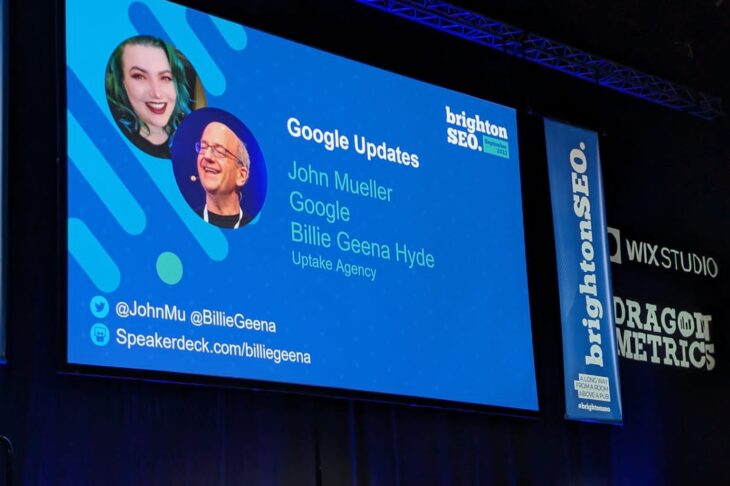
Brand and Messaging: Enhancing your site and your results.
For many organic search marketers in particular, ‘brand‘ might seem like an odd thing to include and to be a focus of three talks at an event like BrightonSEO. However, as Ivana Flynn rightfully pointed out in her talk, branded keywords can drive a significant amount of organic traffic. This is just one of the reasons brand and SEO can’t survive without the other.
Without a recognisable brand, you’re going to struggle to drive organic traffic. But this also goes both ways. Without a website that’s been optimised for search and is a destination for this traffic, you’ll lose out on users trying to find you.
And that’s just brand, not to mention messaging. Unless your web copy is making a connection with your users, they won’t stay on your site let alone convert. But it’s not just copywriting you need, although that is a part of it, it’s your messaging. As Diane Wiredu said, “Good copy can’t fix bad messaging”.
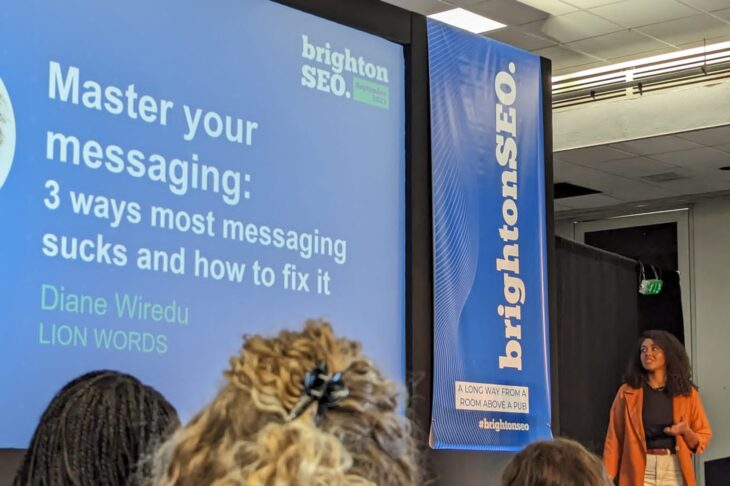
Search and social: it should be an and, not or.
When looking at channels to support your search strategy, social also needs to be included in the discussion. So, it’s easy to see why there was a whole section of talks dedicated to ‘search and social’ at BrightonSEO.
Now, the obvious connection between the two is traffic. We’re always looking to drive traffic to our site, and then conversions from there. Social is one way to do just that. But it goes further.
As consumers, we’re no longer just seeking information from Google or other search engines. The very way we are searching for information has changed. According to Ray Saddiq’s talk “the search journey now starts earlier than we think it does”. This includes social media channels, like LinkedIn or even TikTok.
This is where having your channels work cohesively together can pay dividends. As Anthony Leung put it in his talk, “SEO and LinkedIn share the same DNA when it comes to valuable content”. This essentially means as digital marketers, we need to be making the most of our content and using it across all our channels. But this doesn’t just mean posting a link to your blog on social media. It means tailoring your content for each channel and each audience. For example, when it comes to sharing your blogs you could break them up and make them more digestible with carousel posts or videos. And if you’re creating a video, why not embed it on your site as well.
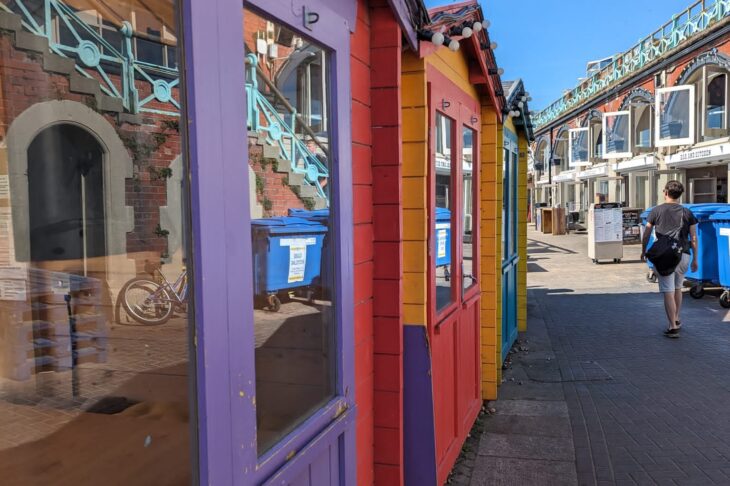
PR: It’s more connected than you may think.
While PR might not have come up much at this year’s event, the results of digital PR activity can impact SEO. So, I’d be remiss to not mention it here.
When we’re looking at digital PR, you’re looking at gaining placements in publications that are relevant to your audience. And in these placements, having backlinks. This brings me back to the fourth element of search, outreach. These placements and backlinks are important for search for a few reasons. Firstly, it helps get your brand out in front of your audience. Secondly, having a link can drive traffic to your site. Finally, it builds SEO equity, trust, and boosts domain authority.
This last point is particularly key.
One way you may be measuring search success is where you are ranking for keywords. While domain authority isn’t a direct ranking factor, external links can play a role in your rankings. Domain authority is just a way to quantify this.
These links essentially act as a signal to search engines that the piece of content is valuable enough to send users away from the website to another piece of content.
But getting these links isn’t always easy, given that the goal of many websites is to keep users on it. This is where a strong piece of content is needed, as well as a supporting digital PR approach.
Putting your audience first.
As I’ve established, search can support, and needs to be supported, by all marketing channels to maximise success. But it isn’t the only thing that connects the channels. It’s the audience.
So it makes sense that a theme that ran across Brighton SEO was just that. Whether that’s looking at the channels they are on or the content being created. We need to remember to put our audience first.
Once we understand that, we can build out from there. Using a mix of the channels appropriately and as part of a wider holistic picture. Even the most creative marketing campaigns will struggle to break through the noise of the world we live in if it’s confined to one channel. This includes search.
An integrated approach.
As a bi-lateral B2B marketing agency, we know that the best way to help our clients reach their goals is with an integrated approach. That’s why our teams are made up of channel specialists. So, we have search and social sitting alongside PR in one team.
If you’re looking for an agency to grow your SEO and digital marketing strategy, get in touch with the team by emailing hello@wyattinternational.com, or head to my LinkedIn to drop me a DM.